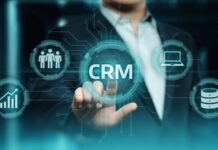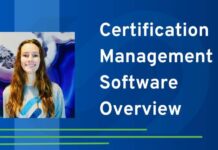What is Automated Accounting?
A systematic approach that ensures maintaining updated accounting records for a company with the help of automated accounting software is called automated accounting. These are business software with inbuilt configurations that help with easy receivable and payable cross-postings. As a result, these software keep accounting records in compliance with generally accepted accounting principles. In addition, with a collection of report formats, customers can use standardised dashboards or create customised reports catering to their individual business needs.
Good automated accounting software will support multi-location accounting of inventory, data consolidation of finances and reconciliation, country-specific reporting, and more. It integrates with your CRM, HRMS, Inventory management, asset management, and other management software of your ERP system. It may take anywhere around them months to one year to successfully implement a custom automated accounting software and may cost anywhere around $200,000 to 500,000 dollars ranging from the complexity of the solutions and features required.
Why do you need the automated Dext accounting software?
As per research, automating can help eliminate roughly 45% of losses incurred in your company due to accounting errors. Below mentioned is a list of automated tasks that may help save a lot of operational time for a business and other benefits of having the Dext accounting software for your business.
- Month-end reporting
Month-end reporting means the process and tasks that any accounting team needs to execute at the closing of the month of the business’ operations. This also includes closing the ledger, reconciliation of cash accounts as well as the adjustment of allowance accounts, and calculating income tax provisions for the month. It’s a systematic and routine process, hence essential to be executed without any errors.
With automation, reports can be pulled automatically from different sources and used to populate a sheet with all the data.
- Invoice Processing
Businesses process invoices at some time or another. It’s essential to keep track of the accounts and ensure vendor payments are made promptly. Many companies have accounts teams responsible for making payments on their behalf. Invoice automation software helps you to receive, verify, confirm, and pay invoices without missing deadlines or losing a crucial vendor.
Your automated accounting software will extract relevant data from the invoice and populate your management software. Cognitive invoice software can be used to record electronic or digital invoices extracted from paper or emails. Robotic process automation can be used to extract essential information from emails, retrieve invoice data, and enter data into invoice processing software. Automated processes help reduce manual labour hours and human errors, ensuring a smooth accounting experience for your business.
- Expense reporting
Reporting expenses towards every month-end is vital for a company for two primary reasons. One, it helps expenses documents that make filing income tax returns easy. And second, it helps track the total expenses of a company. With the help of efficient expense automation software or robotic process automation, this process can be easily automated. After that, logging expenses, attaching receipts, and verifying payment and receipts log becomes automatic that can help reduce manual working hours to a great extent.
- Payroll management
Payroll management is one of the most crucial yet tedious tasks for any company. It’s an ongoing process that may happen as frequently as every week. The job responsibility includes calculating payouts as per leaves, bonuses, variable factors, etc., to permanent and contractual employees. In addition, you may have to comply with various state or federal regulations when it comes to balancing a ratio between working hours versus the wages paid.
RPA can be used to manage payrolls much more efficiently. Tasks like bonus calculation, holiday pays, tax compliance, and deductions-related maths can be solved using robots that’ll save time and increase productivity.
- Data storage
One significant compliance that all major companies or consultancy firms have to abide by includes the rule to maintain paper records of transactions for up to 7-10 years in their office premises. Retrieving data if requested from such records becomes very difficult and cannot be accessed from anywhere. But with new advancements, the taxation departments are getting comfortable with the idea of e-receipts which can be maintained in organised folders in the database of a company and can be accessed from anywhere across the world when needed.
With the help of software, you can receive a document digitally and instantly enter the data into your ledger system. The proof of that purchase or the receipt is automatically saved in the relevant folder.
- Cloud access
Accounting software enables you to store your data in the cloud. There can be two ways. Either you could keep all your tasks, project growths, reports, presentations, software, or files directly in the cloud, or it can be automated to save a backup of your data in the cloud at a specified period every day. This enables easy access to all your data wherever needed and removes the element of delay caused by procuring the correct document in time.
- Real-time integrations
The more you integrate your systems, the better your business processes are. Better integrations mean better accuracy over data sets and updated reports that showcase real-time scenarios. For example, your payroll system may integrate with your accounting platform, which further may sync with your spend management software. Such integrations save time, usually invested in copy-pasting data from one sheet to another. In addition, storing all your data in the cloud and your finance processes ensures your systems and teams interact, which helps remove bottlenecks and improves the overall efficiency of your business.
- Journal entry automation
Automated accounting software can help create, update, and approve journal entries in the ledger and sub-ledgers on the financial transactions that happen within or outside of a company, including foreign transactions. The software is equipped with customizable journal templates and includes features like scheduled recurring as well as reversing journal entries. In addition, you get features like automated attachment of source documents, including invoices, receipts, cheques, payrolls reports, leases, etc., alongside each journal entry for better documentation.
Summing up
Automated accounting software is a necessary investment for your business today. As your organisation grows, the need to have maintained financial records in an organised manner may become a necessity to ensure the smooth functioning of your business processes. In addition, a well customised and integrated automated accounting software may help your business with many essential tasks that may otherwise be time-consuming, prone to human error, or involve cost.


































































